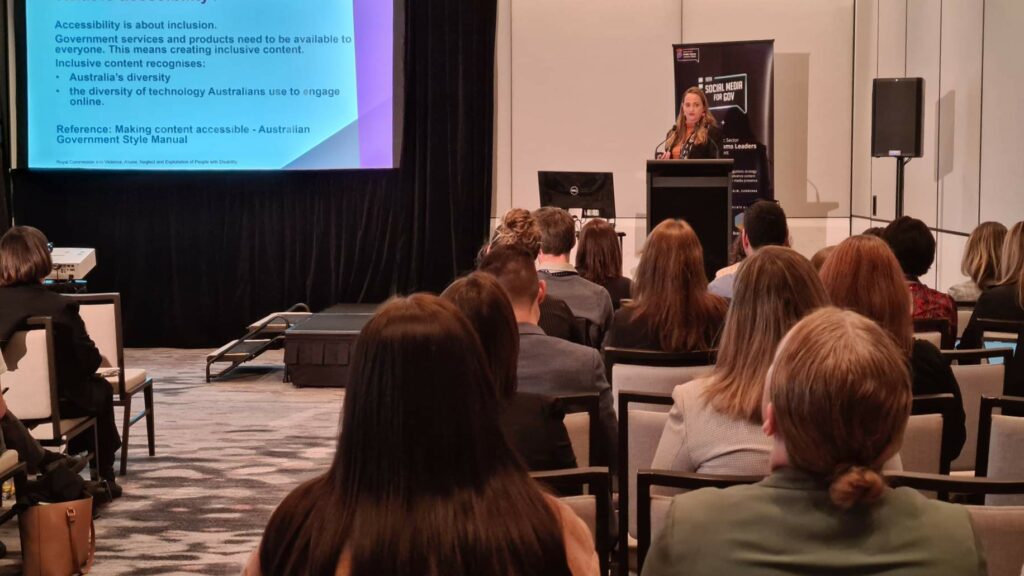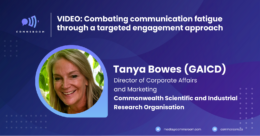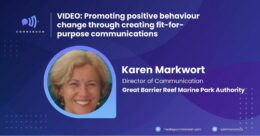The ample availability of communication tools and platforms present an opportunity for government communicators to reach their stakeholders, wherever they are geographically. Unfortunately, this also means they need to compete with other media sources for their audience’s limited attention.
This makes it critical for government communicators to equip themselves with the necessary expertise to use digital technology and other tools to ensure that they are communicating effectively.
It is in this background that Comms Room has decided to conduct the 3rd Annual Public Sector Comms Week. Over 50 speakers graced the event and shared their knowledge to more than 200 attendees on various topics centred around communication and community engagement.
The Need for Inclusive Communication

Among the speakers were Jacqueline Levett of the Royal Disability Commission, who talked about their efforts in making content accessible to people living with disabilities.
Disabilities can come in the form of visual, hearing, mobility, and intellectual disabilities and may come in varying degrees. No matter their personal circumstance, Levett emphasised the need to create content that people can access and engage with.
“Accessibility is all about inclusion. Government services and products need to be available to everyone. This means creating inclusive content,” Levett said.
“For Culturally and Linguistically Diverse (CALD) communities, we are providing translations. For First Nations people, we’re providing translations in audio. And now were trying to increase that to include people with disability in terms of how they consume communication.”
Levett said they are currently working on a set of unifying guidelines for making content and communication accessible to people living with disabilities.
“At this point in time for us, I think best practice would be to co-design with people with disability and pay for an external provider to develop these guidelines. We have discussed it as a team and sought feedback from our disability support network on standard approach for alt text and image descriptions,“ Levett said.
How to reach First Nations Audiences
Hot on the topic of inclusivity was Sarah Wilcox, the digital communications manager for Tasmanian Aboriginal Centre.
Wilcox provided some useful tips for government agencies and their communicators when attempting to establish communication and engage with Aboriginal and First Nations people.
“Be uncomfortable, that’s the B. Be very uncomfortable. Reflect on what you don’t know. Invite feedback. Defensiveness doesn’t help, and that’s a really critical one. People can get defensive and it’s a natural human reaction. I understand it. But we have to strip that away when we’re talking to people who have been severe trauma all their lives. Grow from your mistakes and accept that engagement takes time,” Wilcox said.
Sarah emphasised that Aboriginal people and their organisations are already dealing with a lot of issues and may have trouble engaging with issues that are outside of their core priorities.
“We’re dealing with aboriginal deaths in custody, we’re dealing with child protection and detention, we’ve got the highest incarcerated people in the country. We’re dealing with land rights and at the moment at Lutruwaita that’s a really big thing because we don’t have native title.”
“Don’t get upset if we’re not gonna engage or if we get angry at you asking. Because that’s just the response because we’re dealing with all these other stuff.”
That being said, Wilcox said First Nations people and their advocates need all the help they can get.
“We do need influencers inside government spaces. And I understand having worked in government, you have government overlords and you’re constrained by policy and process and ministers and all the rest of it. But just keep chipping away. Keep chipping away, be an advocate for our people. Because we need it.”
Addressing negative sentiments online
Australian Catholic University’s Jen Rosenburg also graced the function. As the university’s National Strategic Communications Manager, Rosenburg talked about addressing public sentiment and brand perception through community engagement on social media.
Rosenburg stressed the importance of knowing how to use social media for effectively spreading a message, and what to do when not everything goes as planned.
First, Rosenburg said, it’s critical to know who your audience is.

“Stop and ask yourself what you’re doing here. Before you go ahead with anything you really need to think about what you’re hoping to achieve. Who are you talking to, and what do you want them to know about you? It does seem pretty simple, but it can be overlooked and if you do not know the why, it’s pretty tough to conquer the what and the how,” Rosenburg said.
She also discussed the need to use enterprise software for monitoring, addressing and responding to community sentiment.
“Having an enterprise software tool gives you proper means to observe things not just the unique posts and the comments and also the tags. You can also tailor your searches so that you’re not just putting the name of the organisation into the field, you can set up your added terms for keywords, topics of interest, and areas of concern that might actually pop up,” Rosenburg said.
She also discussed the importance of knowing when a certain post warrants a response, and what that response needs to be.
“One of the key things is actually whether to respond or not. Negative comments through public facing social channels for us are dealt with on a case-by-case basis. Primary aim is not to cause further complaint and the response depends on the severity of the grievance of the offence.”
“Responding doesn’t always involve providing further comment or a new post,” she said.
As a university, Rosenburg shared that their policy is to avoid action that can be construed as censorship, up to a point.
“As a university we’re particularly sensitive to anything that looks like censorship. But if the comment’s defamatory or illegal, threatening in any manner, obviously we can hide it or delete it.”
“We can also monitor the person posting to see if they’re doing anything problematic across our channels. Because more often than not, they won’t just one post or one channel. They can get quite creative,” she said.
Establishing your channels as a source of truth
Perhaps the biggest challenge that government communicators face today is combating misinformation, which is made doubly harder by an overwhelmingly negative public opinion on governments.
Summer Goodwin, Editorial and Content Manager at Commonwealth Scientific and Industrial Research Organisation (CSIRO) talked about their efforts to maintain their department as a source of truth, particularly when it came to the COVID-19 pandemic.
“Almost half of respondents see government and media as divisive forces in societies at 48% and 36% respectively. Government leaders are also active sources of misleading information, which is pretty terrifying considering I feel like all of us in this room are trying to combat misinformation and the organisations that we work for are seen by the community as active sources of misleading information,” Goodwin said.
Goodwin cited research from Edelman, which stated that government leaders and journalists are the least trusted of professions. Thankfully, scientists, including the ones at CSIRO, continue to be trusted by the Australian public to provide truth.
That being said, Goodwin said they earn this level of trust by being critical of their content. She siad they apply a risk lens over every piece of content they create, but stressed the need for experimentation.
“It’s really balancing experimentation and risk. Applying that risk lens over the content, over the idea. Who could it particularly upset? Is it relevant for all the audiences, are there particular channels that maybe it’s not gonna work on, are there particular audiences that that meme or cultural reference won’t resonate with. Is it child-safe, does it showcase diversity and inclusion? All that risk lens needs to be applied. But still experiment, and have fun,” Goodwin said.
As technologies evolve with their stakeholders’ needs, government communicators must also enhance their skills and rise to the challenge. As it has for over 20 successful summit, Akolade and Comms Room will continue to provide avenues for practitioners to network, share best practices, and empower the sector through upskilling.
Post Views: 45































